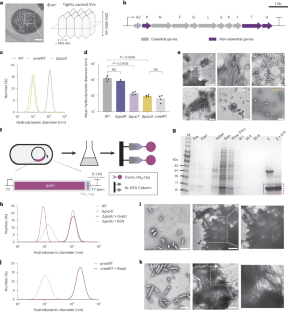2024-04-04 ワシントン大学セントルイス校
<関連情報>
- https://source.wustl.edu/2024/04/nerve-stimulation-for-sleep-apnea-is-less-effective-for-people-with-higher-bmis/
- https://jamanetwork.com/journals/jamaotolaryngology/article-abstract/2817168
BMIと仰臥位睡眠による舌下神経刺激に対する反応の変化 Response to Hypoglossal Nerve Stimulation Changes With Body Mass Index and Supine Sleep
Rutwik M. Patel, DO; Hannah Z. Wang, MD; Erica L. Jamro, PhD, MBA; et al
JAMA Otolaryngology-Head & Neck Surgery Published:April 4, 2024
DOI:0.1001/jamaoto.2024.0261
Key Points
Question Is hypoglossal nerve stimulation (HGNS) an effective treatment for obstructive sleep apnea, and does body mass index (BMI) predict treatment response?
Findings In this cohort study including 76 patients treated with HGNS, 59 patients (78%) had a response to treatment. Patients with a body mass index of 32 to 35 had 75% lower odds of responding to treatment compared with patients with a body mass index of 32 or less.
Meaning This study provides evidence supporting the use of HGNS as a treatment for obstructive sleep apnea, but sleep medicine clinicians should be aware that higher BMI may affect treatment response.
Abstract
Importance Hypoglossal nerve stimulation (HGNS) is a potential alternative therapy for obstructive sleep apnea (OSA), but its efficacy in a clinical setting and the impact of body mass index (BMI; calculated as weight in kilograms divided by height in meters squared) on treatment response remain unclear.
Objective To investigate whether HGNS therapy is effective for patients with OSA, whether HGNS can treat supine OSA, and whether there are associations between BMI and treatment response.
Design, Setting, and Participants In this cohort study, adult patients with OSA implanted with HGNS at the Washington University Medical Center in St Louis from April 2019 to January 2023 were included. Data were analyzed from January 2023 to January 2024.
Exposure HGNS.
Main Outcomes and Measures Multivariable logistic regression was performed to assess associations between HGNS treatment response and both BMI and supine sleep. Treatment response was defined as 50% reduction or greater in preimplantation Apnea-Hypopnea Index (AHI) score and postimplantation AHI of less than 15 events per hour.
Results Of 76 included patients, 57 (75%) were male, and the median (IQR) age was 61 (51-68) years. A total of 59 patients (78%) achieved a treatment response. There was a clinically meaningful reduction in median (IQR) AHI, from 29.3 (23.1-42.8) events per hour preimplantation to 5.3 (2.6-12.3) events per hour postimplantation (Hodges-Lehman difference of 23.0; 95% CI, 22.6-23.4). In adjusted analyses, patients with BMI of 32 to 35 had 75% lower odds of responding to HGNS compared with those with a BMI of 32 or less (odds ratio, 0.25; 95% CI, 0.07-0.94). Of 44 patients who slept in a supine position, 17 (39%) achieved a treatment response, with a clinically meaningful reduction in median (IQR) supine AHI from 46.3 (33.6-63.2) events per hour preimplantation to 21.8 (4.30-42.6) events per hour postimplantation (Hodges-Lehman difference of 24.6; 95% CI, 23.1-26.5). In adjusted analysis, BMI was associated with lower odds of responding to HGNS with supine AHI treatment response (odds ratio, 0.39; 95% CI, 0.04-2.59), but the imprecision of the estimate prevents making a definitive conclusion.
Conclusions and Relevance This study adds to the growing body of literature supporting the use of HGNS for OSA treatment. Sleep medicine clinicians should consider informing patients that higher BMI and supine sleeping position may decrease therapeutic response to HGNS. Future research is needed to replicate these findings in larger, more diverse cohorts, which would facilitate the optimization of treatment strategies and patient counseling for HGNS therapy.



